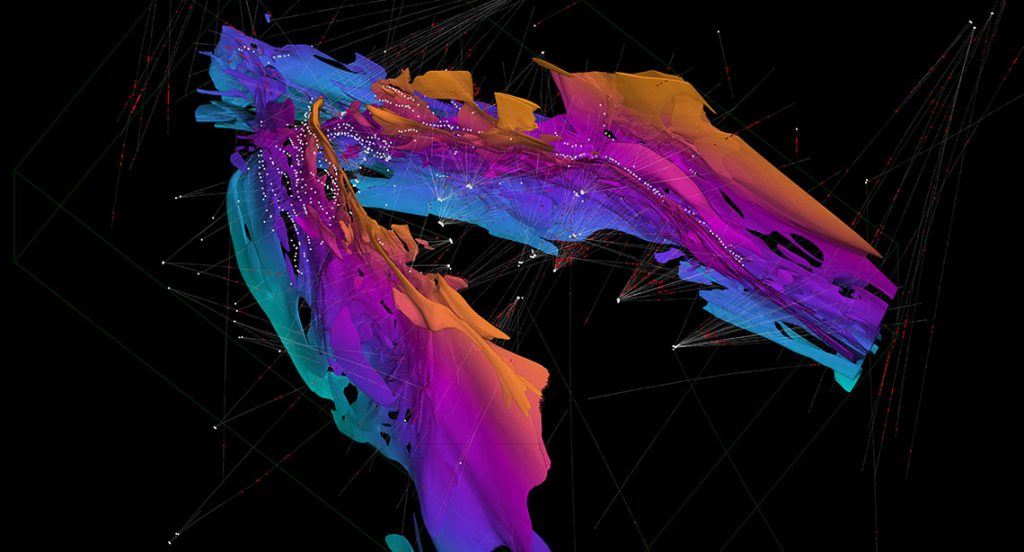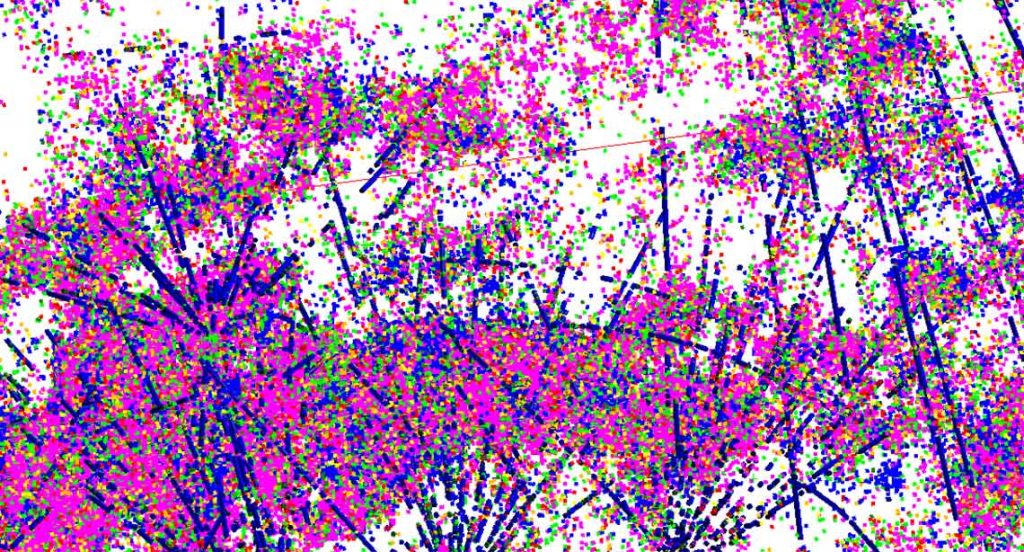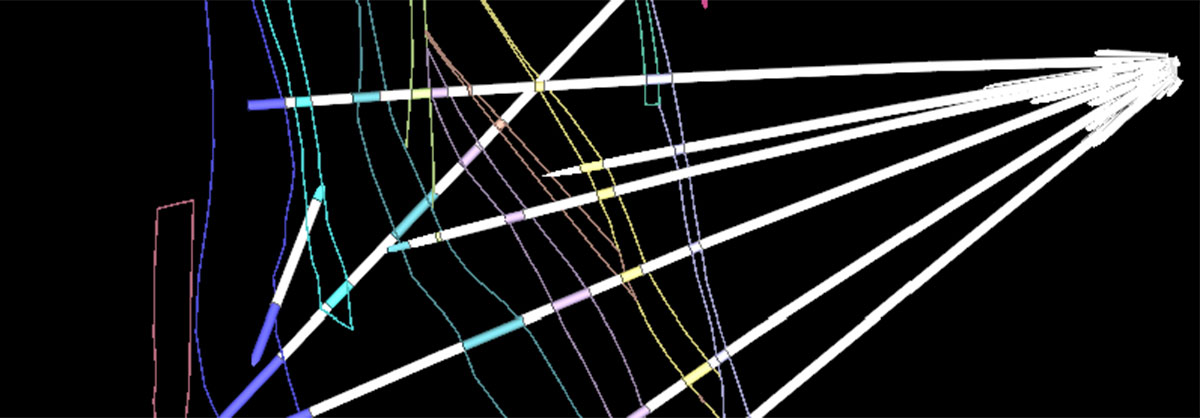September 2023 Issue Index
Discovering domaining
Maptek instigated the Geology Challenge in 2021 and has since run an internal program to inspire staff to experiment with our software.
Daniel Owen applied Vulcan GeologyCore to model a complicated narrow vein network.
I spent years manually wireframing narrow vein gold deposits – where it took weeks or months to even update existing interpretations with new drilling.
The Modelling Manager, with its baked in Vein Modeller, enabled me to model the 27 veins in the challenge dataset in a couple of days.
In the manual wireframing paradigm, ensuring your veins don’t cross-cut or overlap each other when there’s many veins in close proximity and varying orientations is painful and time consuming.
The Modelling Manager makes this painless, as you can easily define relationship rules to truncate veins against each other to ensure there’s no overlapping veins.

I could not have come even close to making this sort of detailed model within this time span without the tools available in Vulcan GeologyCore.
The most exciting part is that it’s an incredibly easy process if I want to update with extra drillholes or change the domaining in any holes.
Using the Flag Domains tool I can easily tag the desired domains in the holes, hit ‘go’ on the Modelling Manager and the veins will all be rebuilt to match the data and the relationship rules I’ve defined.
These are the modelling tools I dreamed of having when I was on site doing this work all day everyday.
During this project I realised that the Vein Network relationships panel in the Modelling Manager could be improved when defining lots of truncation rules for multiple veins at a time.
I was able to mock up a far more streamlined panel design to guide our software development team to improve it for future releases.
I look forward to recommending the repeatable, auditable vein modelling approach to our customers!
Geordie Matthews used Vulcan Data Analyser to create theoretical veins from existing drill data.
Any interpretation of a geological entity from a limited dataset will create a lower resolution outcome than the resolution of the input data. By using conditional simulation, images of potential vein and mineralisation trends can be created at a resolution in excess of the sample dataset. The resulting model can then be used to build a wide range of ‘what if’ scenarios.
A node mesh of 1m x 1m x 0.5m was interpolated with Au grade within broad structural domains using a tight, local search. Five realisations were considered together to create a probability map of possible grade and vein trends for the deposit.
A key constraint is the model size and the number of nodes requiring interpolation. An ID1 estimate was used to identify the region proximal to the drilling, and this volume was then informed by simulated grades.
This project covers the first part of generating a domain model for the distribution of gold bearing veins within the deposit. Further work is required to synthetically drill and sample the simulation model, and then create various permutations of the deposit given a range of assumptions. The results provide insight into deposit variability and how spatial relationships change as drill density and spacing alters.

Rob Slade took a pure data science approach to orebody discovery using a binary indicator domain and DomainMCF.
In complex geological systems of structural discontinuity (faulting, intrusion and metamorphosis), lithology, geochemistry (alteration) and mineralisation (grade) are usually the most consistently recorded and accurate data.
This is especially true where combined exploration and production (grade control) data populations are present. An initial view of mineralisation ‘flow’ can be an excellent guide to the entire system in building up a final model.
All 2564 holes were reviewed for intervals above and below the indicator cut-off, defining the binary domain as ore and waste. The data was prepared for training a DomainMCF prediction machine using a 1m x 1m x 1m parent with ¼ sub-blocking definition (0.25m x 0.25m x 0.25m).
Training sample data was ‘densified’ to 1/5 of the sub-block dimension, a composite run length of 0.05m.
An isotropic approach to the DomainMCF block model definition allowed the mineralisation data to ‘take us where it will’ to see what mineralisation data tells us about orebody geometry.
All holes were adjusted with a waste beginning and end to ensure that holes ending in ore were not used in training the DomainMCF machine to predict beyond recorded data. This, of course, is a conservative mineralisation assumption, declared as such in this early orebody discovery exercise.
The problem was solved!
Two block models were predicted under the goal of taking the data as presented and assumed to be the best information available. As a secondary goal, I determined to only spend one hour per model on data preparation and input to DomainMCF.
The final mineralisation model enlightens us to the geometry of the orebody, within the specified model volume.
This model is perfectly suited for use in modelling anisotropy and continuing the challenge of estimating grade.
- Maptek staff participating in the discovering domaining challenge chose three different solutions to the modelling from drilling data exercise
- Vulcan GeologyCore, Vulcan Data Analyser and DomainMCF were the software tools used to challenge standard modelling approaches
- Final projects proved the methods, delivered on innovation and increased understanding of vein networks, orebody geometry and deposit variability
The theme for the external Maptek Geology Challenge currently underway is controlling complexity in domaining. An internal underground dataset challenge is being conducted in four parts to generate domains, grade, mine design and scheduling assets from initial drilling information.
Participants for part 1 – domaining – selected from the range of Maptek modelling tools and here we publish reflections from three that reveal the different approaches.
The projects provided insights into issues faced by our customers, alongside outstanding results that will guide software development and automation tools.

